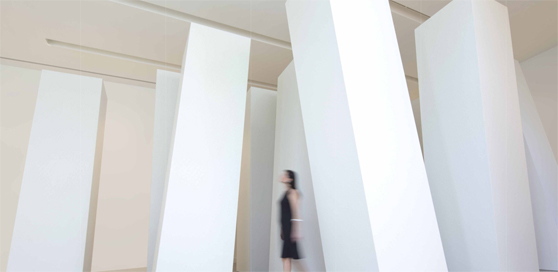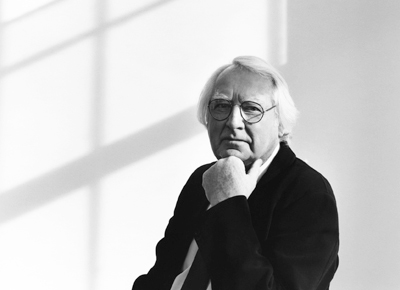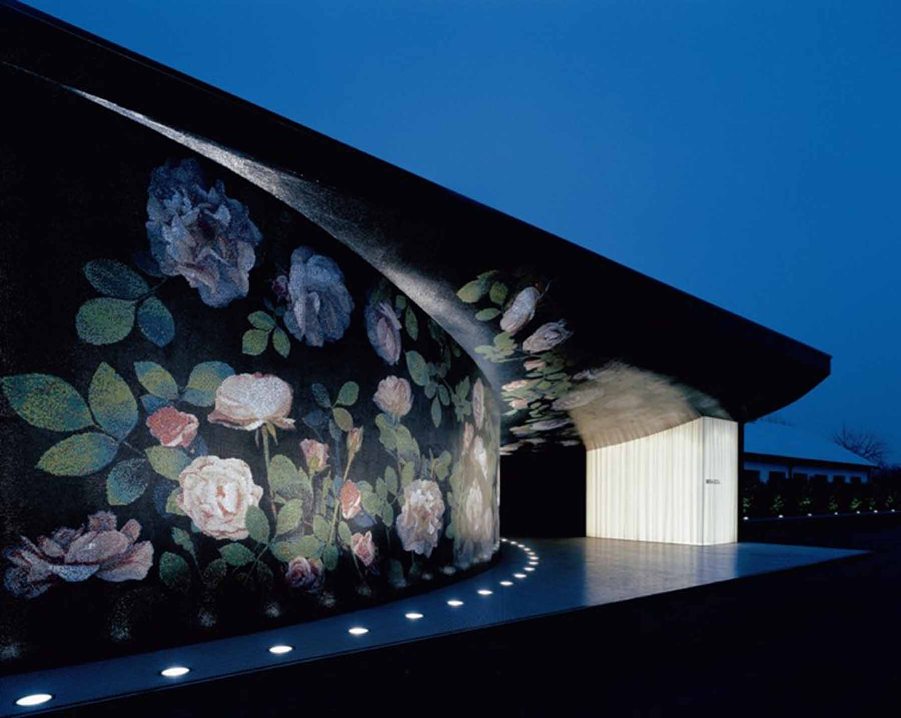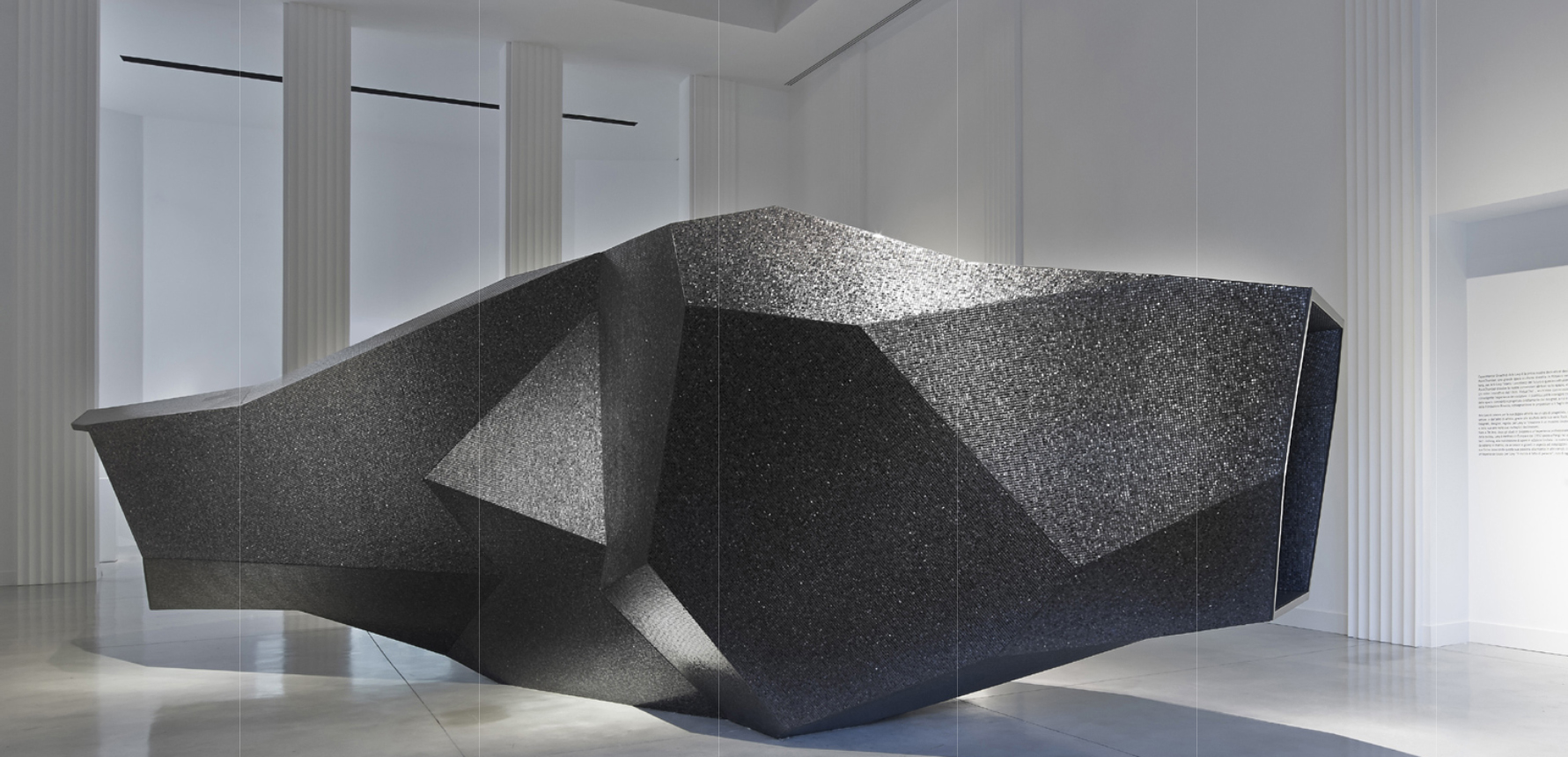
Richard Meier: Architecture and Design at the Italian Bisazza Foundation
The unique exhibition Richard Meier: Architecture and Design celebrating the 50th anniversary of his RMP studio in New York can be seen in Montecchio Maggiore, Italy, in the province of Vicenza, renowned for Andrea Palladio and his local villas. This is the very first extensive exhibition of Richard Meier in Italy. Key works, theoretical reflections, models, photographs, and drawings are on display. The project was initiated by Meier's company and the local Bisazza foundation.
The visit to this exceptional exhibition was organized for Czech architects by Archtiles, which is a partner of the Bisazza company for the Czech market. Several prominent names in Czech design and architecture accepted the invitation, including Bořek Šípek, Eva Eisler, and others.
“White is the most beautiful color for me because it allows all the colors of the rainbow to be seen... White has always been a symbol of perfection, purity, clarity. On a white surface, the play of light and shadow, planes and cuts can be best understood”.







"It is a great honor for us to collaborate with the Bisazza Foundation on the first retrospective of our work in Europe. After completing so many projects in Europe and with many ongoing constructions and new contracts in Italy, England, Germany, Switzerland, and the Czech Republic, it is very gratifying to be able to show our cornerstone projects to the public here in Vicenza. I am also very happy, as a designer and architect, that this first European exhibition of our studio is in Italy, a country where we have completed a number of projects," summarizes Richard Meier, and the president of the foundation, Piero Bisazza, adds: " Richard Meier is one of the most important and influential voices in the international architectural scene. In light of the foundation's goals to represent original and inspiring designers and architects, as well as stimulate debate about the cultural environment, we are immensely honored to host such an exhibition that has not been seen anywhere else. With this, we would like to thank Mr. Meier for his work and contributions not only in the architectural world."
 |
The visit to this exceptional exhibition was organized for Czech architects by Archtiles, which is a partner of the Bisazza company for the Czech market. Several prominent names in Czech design and architecture accepted the invitation, including Bořek Šípek, Eva Eisler, and others.
 |
“White is the most beautiful color for me because it allows all the colors of the rainbow to be seen... White has always been a symbol of perfection, purity, clarity. On a white surface, the play of light and shadow, planes and cuts can be best understood”.







"It is a great honor for us to collaborate with the Bisazza Foundation on the first retrospective of our work in Europe. After completing so many projects in Europe and with many ongoing constructions and new contracts in Italy, England, Germany, Switzerland, and the Czech Republic, it is very gratifying to be able to show our cornerstone projects to the public here in Vicenza. I am also very happy, as a designer and architect, that this first European exhibition of our studio is in Italy, a country where we have completed a number of projects," summarizes Richard Meier, and the president of the foundation, Piero Bisazza, adds: " Richard Meier is one of the most important and influential voices in the international architectural scene. In light of the foundation's goals to represent original and inspiring designers and architects, as well as stimulate debate about the cultural environment, we are immensely honored to host such an exhibition that has not been seen anywhere else. With this, we would like to thank Mr. Meier for his work and contributions not only in the architectural world."
Bisazza is synonymous with quality and luxury in the field of glass mosaics. It was founded in northern Italy, in the province of Vicenza, in 1956. Masterful quality, the ability to observe and offer attractive collections to the market, and dynamism have made it a globally recognized concept today. Over the years, it has collaborated with leading architects and designers to conceive not only additional collections but also ways to use mosaics as a decorative material in both interiors and exteriors.
 |
Bisazza has always been a symbol of luxury. However, today, that luxury should not belong only to the upper tens of thousands, but rather to the general public. Changing the pricing policy was not the only step taken to support this idea, but it was made especially possible by the establishment of The Bisazza Foundation at the beginning of 2012.
It is a non-profit organization with a dual mission. The first is to provide an exhibition space to showcase the works and installations of contemporary designers and architects who have created original mosaic works over the past 20 years, and the second is to serve as a venue for temporary exhibitions of artists, designers, and architects on an international scale, who may not necessarily be associated with mosaics.
 |






How did the space, the exhibition, Richard Meier fare, and what do designers who ventured out with Archtiles say about mosaics and their application today? The idea of combining Eva Eisler's minimalism with the decorative nature of mosaic is intriguing. Can a minimalist object be created from mosaic? Is mosaic outdated or undervalued?
 |
The permanent installation at Fondazione Bisazza is an example and inspiration, and if I had the opportunity to use such quality mosaic somewhere, it would be a challenge I would love to undertake.”
Eva Eisler
 |
The exhibition about Richard Meier will last until July 28, and the entire architectural province of Vicenza is a great summer vacation tip. For those who cannot make it to Italy, come and recharge with southern energy by viewing the current collections of Bisazza at the showroom of the ceramic flooring and tiling studio Archtiles in Prague and very soon also in Brno! .
The English translation is powered by AI tool. Switch to Czech to view the original text source.
0 comments
add comment













